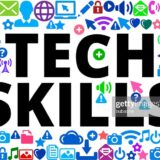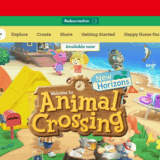In this post, I am going to mention the Best Open-Source AI Software Tools For Small Teams which are most beneficial in terms of features and cost.
These tools suit small teams, developers, and startups and provide an efficient way to manage, deploy, and build AI models.
These open-source tools provide support for innovation and provide flexibility and scalability which include machine learning libraries and NLP frameworks.
Key Points & Best Open-Source AI Software Tools for Small Teams List
| Tool | Key Points |
|---|---|
| TensorFlow | Popular for machine learning and deep learning; strong community support; scalable; supports Python & C++; great for training and deployment. |
| PyTorch | Preferred for research and prototyping; dynamic computation graphs; excellent for NLP and computer vision projects. |
| Hugging Face Transformers | Ready-to-use NLP models; supports BERT, GPT, and others; easy integration; ideal for small teams working on text and chatbot applications. |
| Scikit-learn | Lightweight machine learning toolkit; best for classical ML (e.g., regression, clustering); easy to learn and implement. |
| MLflow | Open-source ML lifecycle tool; handles experiment tracking, model packaging, and deployment; great for team collaboration. |
| OpenCV | Computer vision toolkit; ideal for image processing, face recognition, object tracking; supports Python, C++, and Java. |
| LangChain | Designed for building applications with LLMs; integrates with Hugging Face, OpenAI, and vector stores; simplifies complex workflows. |
| Rasa | Open-source conversational AI framework; great for building custom chatbots; supports NLU and dialogue management; no cloud lock-in. |
| DVC (Data Version Control) | Helps manage datasets and ML models with Git-like commands; ideal for versioning and collaboration on model/data pipelines. |
| MindsDB | AutoML tool for integrating AI into databases; allows using SQL to build and deploy models; useful for small teams without deep ML expertise. |
10 Best Open-Source AI Software Tools for Small Teams
1.TensorFlow
TensorFlow is Google’s open-source machine learning framework that is one of the best in the industry. Small teams will appreciate TensorFlow’s ML/AI model support as well as its visualization and mobile deployment capabilities.
TensorFlow offers deep learning as well as traditional ML model support. With visualization and mobile deployment tools like TensorBoard and TensorFlow Lite, small teams can easily scale prototypes to full production.

TensorFlow is well documented and has a large community, making it easier for teams to integrate pre-trained models and Keras into existing systems, which speeds up development and helps optimize resource use.
| Feature | Details |
|---|---|
| Developer | |
| Language Support | Python, C++, Java, JavaScript |
| Model Types | Deep learning, traditional ML |
| Deployment Options | Mobile (TensorFlow Lite), Web (TensorFlow.js), Cloud, Edge |
| Visualization Tool | TensorBoard |
| Community & Ecosystem | Large community, many pre-trained models |
| Integration | Keras API, TFX (TensorFlow Extended), TensorFlow Hub |
| Hardware Acceleration | GPU, TPU support |
2.PyTorch
The dynamic computational graph system of PyTorch, developed by Meta, is praised for easiness and convenience. Rapid prototyping and flexible model development are best done in small teams, and for those, PyTorch serves as a perfect fit.
Debugging in PyTorch is easily done because of its Pythonic features and using other Python libraries is smooth. Tools for model serving, computer vision, and other tasks are part of the ecosystem, for example, TorchServe and TorchVision.

The community in open source is rich in resources like tutorials, pre-trained models, and various other augmentations. A lot of the new and hot models in research and development are done in PyTorch, which is why it is so popular in research, making it a faster enable for innovations.
| Feature | Details |
|---|---|
| Developer | Meta (Facebook AI) |
| Language Support | Python, C++ |
| Model Flexibility | Dynamic computational graph |
| Use Case | Research, prototyping, production |
| Integration | TorchServe, TorchVision, Hugging Face Transformers |
| Debugging | Native Python debugging (e.g., with pdb) |
| Community Support | Strong academic and research community |
| Hardware Acceleration | GPU support via CUDA |
3.Hugging Face Transformers
Hugging Face Transformers is an innovative open-sourced library for Natural Language Processing (NLP) with hundreds of transformer models such as BERT, GPT, and T5 available for download. It is suitable for small teams since it saves a lot of time that is needed to construct advanced language models.

With an easy to use API, developers are able to customize models to perform tasks such as sentiment analysis, summarization, and even question-answering. Transformers can easily be used with both PyTorch and TensorFlow, which is an added bonus.
Additionally, Hugging Face provides a thriving community, model hub, and Gradio and Datasets integration enabling small teams to construct, test, and deploy language models in a timely and precise manner.
| Feature | Details |
|---|---|
| Developer | Hugging Face |
| Primary Focus | Natural Language Processing (NLP) |
| Supported Models | BERT, GPT, RoBERTa, T5, XLNet, etc. |
| Framework Compatibility | Works with PyTorch, TensorFlow, and JAX |
| Pre-trained Models | 1000s of free models on Hugging Face Hub |
| API Simplicity | Easy-to-use pipeline API |
| Integrations | LangChain, Gradio, Datasets, ONNX |
| Community | Active forums, model sharing platform |
4.Scikit-learn
Scikit-learn is a machine learning library built on NumPy, SciPy, and matplotlib. Due to its user-friendly interface, it is suitable for small to mid-sized groups focusing on classical ML such as classification, regression, or clustering.
Scikit-learn streamlines the model training, evaluation, and preprocessing offering numerous utilities and algorithms. With minimal configuration required, The library is easy to integrate and very accessible.

It is most useful for educational or teaching purposes as well as for rapid prototyping and integration to production pipelines for machine learning tasks of small to mid scale.
| Feature | Details |
|---|---|
| Language | Python |
| ML Algorithms | Regression, classification, clustering, dimensionality reduction |
| Model Evaluation | Cross-validation, grid search, metrics |
| Preprocessing Tools | Feature scaling, encoding, normalization |
| API Design | Consistent and beginner-friendly |
| Dependencies | Built on NumPy, SciPy, matplotlib |
| Use Cases | Prototyping, small-scale ML projects, teaching |
| Visualization | Basic plotting support via matplotlib |
5.MLflow
MLflow is an open-source platform for managing the complete machine learning lifecycle, including experimentation, reproducibility, and deployment. It allows small teams to track experiments, log metrics, and version models while seamlessly deploying them.
MLflow is compatible with all the major ML libraries, including TensorFlow, PyTorch, and Scikit-learn, which enables its widespread usage. Its modular design with features such as MLflow Tracking, Projects, Models, and Registry provide useful team collaboration.

With MLflow, teams can compare model performance easily and maintain a centralized repository of experiments and models. It is a lightweight tool that is easily cloud-deployable or can be used locally, which makes it ideal for small scale projects.
| Feature | Details |
|---|---|
| Components | Tracking, Projects, Models, Registry |
| Framework Support | Compatible with PyTorch, TensorFlow, XGBoost, LightGBM |
| Model Deployment | Supports REST API, Docker, SageMaker, Azure ML |
| Experiment Tracking | Logs parameters, metrics, artifacts |
| Model Versioning | Built-in version control system |
| UI Dashboard | Web interface to view experiments |
| Storage | Supports local, S3, GCS, Azure Blob |
| Integration | Works well with DVC, Git, Kubernetes |
6.OpenCV
OpenCV (Open Source Computer Vision Library) is one of the most popular toolkits for performing computer vision and image processing in real-time. Using OpenCV, small teams can develop applications for object detection, face recognition, motion tracking, and much more.
OpenCV is cross-platform and supports different programming languages such as Windows, Linux, Android, and iOS, as well as Python, C++, and Java.

Reserved versions, great documentation, and a rich ecosystem of users make it possible for anyone, whether a beginner or seasoned professional, to learn and use OpenCV.
OpenCV modules for deep learning also allow teams to integrate modern and traditional methods to solve vision problems and perform image analysis.
| Feature | Details |
|---|---|
| Language Support | C++, Python, Java, JavaScript |
| Platform Support | Windows, Linux, macOS, Android, iOS |
| Core Focus | Real-time computer vision |
| Functionality | Image processing, object detection, face recognition, video analysis |
| Deep Learning Integration | Supports DNN modules and pre-trained models |
| Performance | Optimized with SIMD, OpenCL |
| Community Resources | Extensive documentation and tutorials |
| Usability | Works offline, cross-platform |
7.LangChain
LangChain is a framework that facilitates the creation of applications based on language models such as GPT or Claude. It is a good fit for small groups that want to create an AI-powered chatbot, agent, or a tool that can reason.
LangChain has made integration with different model vendors, vector databases, and tools such as OpenAI, Hugging Face, and Pinecone easier.

It enables the integration of logic, memory, and other data sources with large language models (LLMs) to form complicated applications that run in multiple steps.
LangChain is well-documented and has flexible parts, enabling small teams to rapidly prototype iterate on workflows using LLMs and build adaptable AI systems that are intelligent and contextually aware.
| Feature | Details |
|---|---|
| Language | Python, JavaScript |
| Primary Use | LLM-powered applications |
| Components | Chains, agents, tools, memory, prompts |
| LLM Support | OpenAI, Hugging Face, Anthropic, Cohere, etc. |
| Vector Store Integration | Pinecone, Weaviate, FAISS, Chroma |
| External Tool Access | Web search, APIs, file loaders |
| Workflow Creation | Chain multiple steps (prompt → LLM → output) |
| Developer Focus | Fast prototyping, experimentation |
8.Rasa
Rasa is a framework for building Conversational AI applications. It is designed for small teams to construct sophisticated chatbots and virtual assistants. It is a cloud-independent solution, offering powerful NLU (Natural Language Understanding and dialogue management) tools.
Rasa’s cloud-independent solution enables team to create bespoke and proprietary AI agents. Understanding the user’s intent, context management, and response formulation is done using Rasa’s machine learning techniques.

It facilitates development in multiple languages, offers integration with Slack and Telegram, and supports data security with full on-premise operation.
Rasa provides interactive learning tools, robust testing, and advanced simulation capabilities, which is beneficial for focused customer AI startups and teams.
| Feature | Details |
|---|---|
| Language | Python |
| Framework Type | Conversational AI (chatbots and assistants) |
| Core Modules | Rasa NLU, Rasa Core |
| Dialogue Management | ML-based dialogue flow |
| Deployment | On-premise, Docker, Kubernetes |
| Channels Supported | Telegram, Slack, Facebook Messenger, custom |
| Data Privacy | 100% on-premise, no cloud dependency |
| Community Tools | Rasa X for testing and improvement |
9.DVC (Data Version Control)
DVC is an open-source version control system that is equipped to manage machine learning projects and is compatible with Git. It helps small teams to manage datasets, models, and experiments in a reproducible way.
DVC integrates with cloud storage services, which is useful for managing large files. It also helps reproducibility and comparison of experiments by different members of the team making collaboration easier.

DVC works seamlessly with other CI/CD MLOps tools and frameworks, which keeps projects organized and facilitates the maintenance of orderly, traceable, and well-integrated work throughout the lifecycle.
For small teams, DVC is a boon as the system adds organization and trust to machine learning workflows without the need for an advanced and costly MLOps infrastructure.
| Feature | Details |
|---|---|
| Language | Python |
| Integration | Git, MLflow, Jenkins, GitHub Actions |
| Version Control | Tracks data, models, and experiments |
| Remote Storage | S3, GCS, Azure Blob, SSH, local drive |
| Reproducibility | Ensures repeatable ML pipelines |
| CLI Tools | Git-like syntax for ML workflow |
| Collaboration | Shared pipelines and data states among teams |
| Metrics and Plots | Compare experiment results easily |
10.MindsDB
An open source AI platform, MindsDB allows users to create and deploy machine learning models within their SQL-enabled MySQL, PostgreSQL, and ClickHouse databases. Users can perform various tasks including forecasting, anomaly detection, and data classification through simple point-and-click interface.
As a result, machine learning modules can be integrated into other software applications without much expertise. For teams lacking deep machine learning knowledge, MindsDB can be easily integrated with popular ML libraries

Streamlining Predictive ML application creation. Thanks to SQL-based model training and deployment functions, data analysts and software developers are able to AI-enable their applications through use of simple intuitive interface.
| Feature | Details |
|---|---|
| Integration | Works inside databases (MySQL, PostgreSQL, ClickHouse, etc.) |
| Language | SQL-first approach |
| Use Cases | Forecasting, classification, anomaly detection |
| Model Training | AutoML – minimal ML knowledge needed |
| Platform Support | Web UI + database interfaces |
| Deployment | On-premise or hosted |
| Extensibility | Supports LightGBM, XGBoost, scikit-learn |
| Ease of Use | Write SQL to build and query models |
Conclusion
To conclude, the availability of open-source AI tools allows small teams to construct, experiment, and launch intelligent solutions at a fraction of the cost and without requiring a sophisticated infrastructure. They help us with deep learning through TensorFlow and PyTorch, NLP using Hugging Face, and even building chatbots with Rasa.
These tools not only have robust and responsive communities, but they also offer great flexibility and scalability. Scikit-learn and MLflow streamline the machine learning process, and DVC provides version control and collaboration.
With AI accessible through SQL, MindsDB offered simplified AI, and through LangChain, powerful LLM-based applications were enabled. These tools help in robust innovative foundational building with agile teams and ease complex AI deploying.












